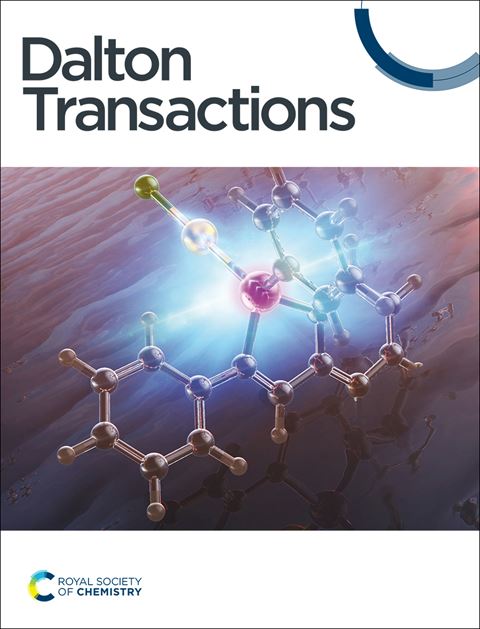Size-dependent catalytic reactivity of NO Reduction by CO mediated by the RhnV2O3– clusters (n = 2–5)
IF 3.5
3区 化学
Q2 CHEMISTRY, INORGANIC & NUCLEAR
引用次数: 0
Abstract
A fundamental understanding on the precise structural characteristic of interface active sites confined in heterogeneous catalysts is pivotal to construct vigorous metal–support boundary. Herein, a series of RhnV2O3–5– (n = 2–5) clusters were theoretically designed and we demonstrated that RhnV2O3–5– can catalytically reduce NO into N2 selectively by CO. We identified that the structure of RhnV2O3− can be considered as the dispersion of a Rhn moiety on the V2O3 “support” anchored by two V atoms. The distance between the top Rh atom that is responsible for reactant capture and V atom in RhnV2O3– becomes longer with the increase of cluster size, and the leading result is that V atoms in larger clusters can be less accessible during the reactions. A size-dependent behavior of NO reduction by RhnV2O3− was observed that V atom always be involved in the triatomic site RhV2 or Rh2V in Rh2−4V2O3− to drive N−O rupture and N−N coupling, while only three Rh atoms in Rh5V2O3− are available to drive NO reduction. One Rh atom in products Rh2−4V2O4,5− also functions as the anchoring site for CO and then delivers CO for oxidation by nearby coordinated oxygen atom. This finding emphasizes that our recently identified triatomic active site Ceδ+–Rhδ––Ceδ+ in RhCe2O3− for selective reduction of NO into N2 still prevails but could behave in different manners in larger RhnV2O3− (n ≥ 5) clusters.求助全文
约1分钟内获得全文
求助全文
来源期刊

Dalton Transactions
化学-无机化学与核化学
CiteScore
6.60
自引率
7.50%
发文量
1832
审稿时长
1.5 months
期刊介绍:
Dalton Transactions is a journal for all areas of inorganic chemistry, which encompasses the organometallic, bioinorganic and materials chemistry of the elements, with applications including synthesis, catalysis, energy conversion/storage, electrical devices and medicine. Dalton Transactions welcomes high-quality, original submissions in all of these areas and more, where the advancement of knowledge in inorganic chemistry is significant.
 求助内容:
求助内容: 应助结果提醒方式:
应助结果提醒方式:


